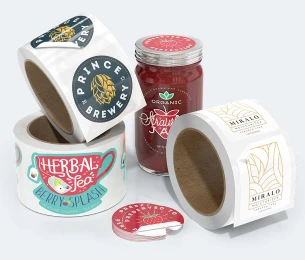Cardboard boxes have become a ubiquitous element in our daily lives, playing a crucial role in packaging, shipping, and storage across a multitude of industries. Their versatility, affordability, and eco-friendliness make them an indispensable packaging solution. This article delves into the significance of cardboard boxes, exploring their history, benefits, types, and the innovative advancements that continue to make them a cornerstone of modern logistics and consumer convenience.

A Brief History
The history of cardboard boxes dates back to the early 19th century. The first use of cardboard as a packaging material is credited to the M. Treverton & Son Company in England, which developed the first commercial cardboard box in 1817. The innovation continued with the invention of corrugated cardboard in 1871 by Albert Jones of New York, who used it to wrap bottles and glass lantern chimneys. This was followed by the development of the first corrugated cardboard box by Robert Gair in 1890, revolutionizing the packaging industry and laying the groundwork for the modern cardboard box we use today.
Benefits of Cardboard Boxes
Sustainability:
Cardboard boxes are made from renewable resources and are biodegradable, making them an environmentally friendly packaging option. They can be easily recycled and repurposed, reducing waste and conserving natural resources. This sustainability is a significant advantage in an era where environmental conservation is paramount.
Cost-Effectiveness:
Cardboard is relatively inexpensive to produce, making it a cost-effective solution for businesses of all sizes. Its lightweight nature also helps reduce shipping costs, contributing to overall savings in logistics and transportation.
Durability and Protection:
Corrugated cardboard, in particular, provides excellent protection for products during transit. Its multi-layered construction absorbs shocks and impacts, safeguarding contents from damage. This makes it ideal for shipping fragile and valuable items.
Customizability:
Cardboard boxes can be easily customized in terms of size, shape, and design to meet specific packaging requirements. They can be printed with branding, instructions, and other relevant information, enhancing their functionality and aesthetic appeal.
Versatility:
Cardboard boxes are used across various industries, from e-commerce and retail to food and beverage, electronics, and more. They are suitable for packaging a wide range of products, from small, delicate items to large, heavy goods.
Types of Cardboard Boxes
Single-Walled Boxes:
Made from a single layer of corrugated cardboard, these boxes are lightweight and suitable for packing and shipping lighter items. They are commonly used in retail and e-commerce.
Double-Walled Boxes:
Featuring two layers of corrugated cardboard, these boxes offer enhanced strength and durability. They are ideal for shipping heavier and more fragile items, providing extra protection during transit.
Die-Cut Boxes:
These boxes are custom-designed to fit specific products. They are made using a die-cutting process that creates precise shapes and sizes, often with features like handles, windows, or compartments.
Folding Cartons:
Often used in retail packaging, folding cartons are made from a single layer of paperboard and are typically used for packaging products like cereals, cosmetics, and pharmaceuticals. They are lightweight, easy to print on, and can be folded flat for storage.
Rigid Boxes:
Also known as set-up boxes, rigid boxes are made from thick, sturdy paperboard and do not collapse. They are often used for luxury items and gift packaging, providing a premium look and feel.
Innovations in Cardboard Box Design
The cardboard box industry continues to innovate, driven by the need for more efficient, sustainable, and user-friendly solutions. Some of the recent advancements include:
Eco-Friendly Materials:
Innovations in eco-friendly materials have led to the development of cardboard made from recycled fibers and alternative sources such as agricultural waste. These materials further reduce the environmental impact of packaging.
Smart Packaging:
Integrating technology into cardboard boxes, such as QR codes, RFID tags, and NFC chips, enhances product tracking and consumer engagement. Smart packaging provides valuable information about the product and its journey, improving transparency and security.
Structural Enhancements:
Advances in structural design have led to the creation of stronger, lighter boxes that use less material without compromising durability. These enhancements optimize the use of resources and improve the overall efficiency of packaging.
Conclusion
Cardboard boxes are a fundamental component of modern packaging, offering a sustainable, cost-effective, and versatile solution for a wide range of applications. Their evolution from simple containers to sophisticated, customizable packaging solutions reflects the industry\'s commitment to innovation and sustainability. As the demand for eco-friendly and efficient packaging continues to grow, cardboard boxes will undoubtedly remain at the forefront, driving progress and meeting the diverse needs of businesses and consumers alike.


